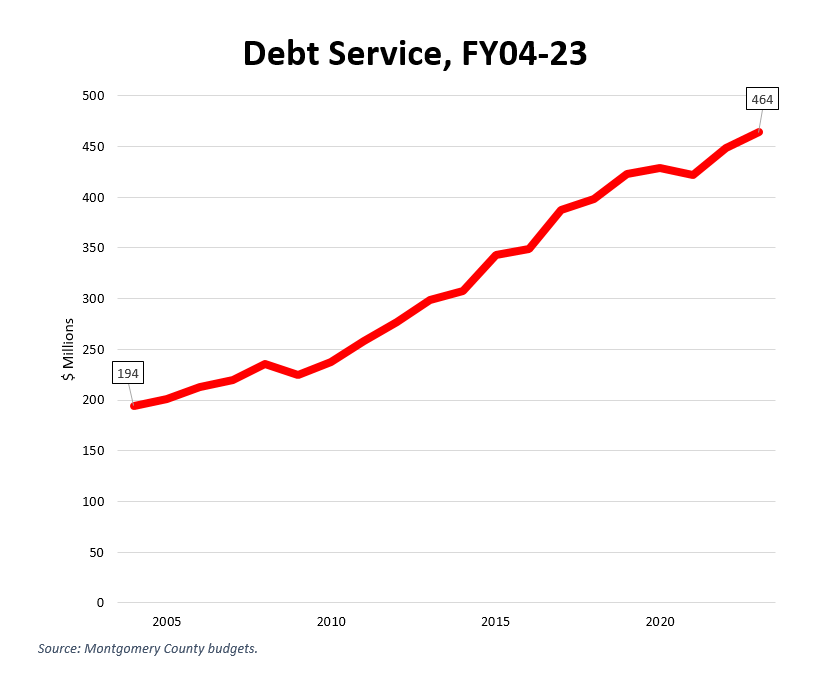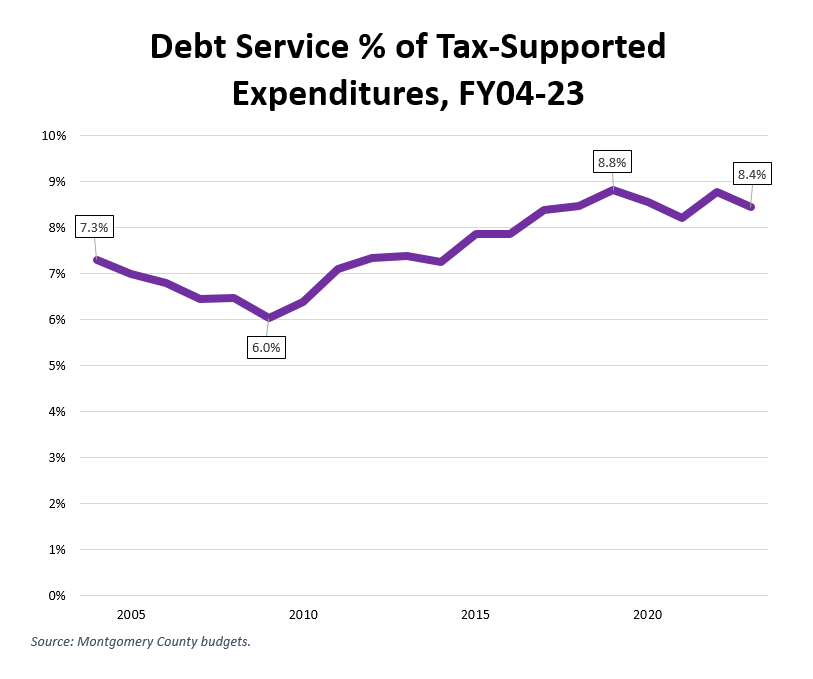By Adam Pagnucco.
Is debt a bad thing? It might be if you have too much of it. But if you use it to buy necessary things for which you don’t have enough cash and you can afford to pay it back, it can be a good thing. As individuals, we make these choices all the time – especially when we take on mortgages. The county does too.
The county government is prohibited by its charter from using long-term debt to finance its operating budget, but it does use debt to finance its capital budget. Its largest single issuance of debt comes from general obligation (GO) bonds, which are 20-year bonds backed by the full faith and credit of the county. They have been rated as AAA by all three major Wall Street ratings agencies since the 1970s. That means the county gets some of the lowest possible interest rates on these bonds so long as its issuances are not excessive.
GO bonds are the biggest single source of financing for the county’s six-year Capital Improvements Program (CIP), which is its capital budget. In the FY23-28 CIP – the latest capital budget – GO bonds accounted for $1.7 billion in funding, or one third of all resources. That makes the level of GO bonds a critical piece of the entire capital budget. Our ability to fund school construction, transportation projects and most other capital projects we want depends in large part on how much money we raise through GO bonds.
The table below shows the level of planned GO bond issuances in county capital budgets since FY05. The last entry shows the new recommended issuance by County Executive Marc Elrich.

There is a history here. GO bonds were on the rise for a few years and then BAM the Great Recession hit. Folks, the Great Recession was a true game changer for the county – for its economy, its operating budget and its capital budget – and I was serving in county government for part of that time. Initially, the county cut GO bonds during the recession over concerns about our bond rating. But then we realized that construction prices were low, contractors were desperate and willing to bid with sharp pencils and we could stimulate the local economy through capital spending. So we increased our borrowing by a lot and built a lot of projects, especially schools. But the party was over by the third term of Ike Leggett’s administration and we started to cut back. The trimming continued during Elrich’s first term.
Why did the county cut back on GO bonds? Let’s understand that debt is not free. It must be paid back, and the county’s vehicle for doing so is debt service. Unlike capital spending, debt service is part of the operating budget and competes with operating spending for MCPS, Montgomery College, public safety, parks and all the other things we like. And because we issue a lot of debt, we pay a LOT of debt service.
The chart below shows debt service expenditures since FY04. All spending is actual, except for FY22-23, which is from approved budgets.

Note the steady and huge rise in debt service. It has more than doubled over the last twenty years. In FY23, the county plans to spend more on debt service than on the operating budgets of circuit courts, technology, the state’s attorney office, the sheriff’s office, libraries, recreation, housing, environmental protection, transportation, consumer protection, emergency management, economic development, utilities and general services combined.
While debt service has risen, so have county revenues and spending overall. The chart below shows debt service’s percentage of tax-supported expenditures over the same time period.

Despite the county’s reduction of GO bonds in recent years, its debt is close to a twenty-year high as a percentage of its total tax-supported spending. That’s because GO bonds have 20 year terms and the county is still paying for debt it issued years ago. Once you open the debt spigot, it stays open for a looooooong time.
So why is this issue coming to a head now? As I wrote last month, Elrich wants to add $40 million in GO bonds to his revised capital budget. That’s not a lot in a $5.3 billion capital budget, but it does reverse the recent trend of the county making progress on its debt load. The county council’s Government Operations Committee is considering the issue today and the council staff is concerned about it. The county uses five fiscal tests to consider the debt capacity it can afford. The county executive’s bond increase proposal fails two of the tests, partially fails a third and barely passes the other two. As a result, council staff recommends not increasing GO bonds.
This may seem technical but it’s really about making choices. Here are three big priorities in any capital budget: funding school construction, funding transportation projects and keeping debt at manageable levels. Those choices are a bit easier when other capital budget revenues, like recordation taxes, impact taxes, state and federal aid and cash are plentiful, but in fact some of these revenues are now tight. Elrich wants to increase school construction, slash transportation and increase borrowing. The council has the final word. We shall see what choices they make going forward as they decide how to spend your money.
